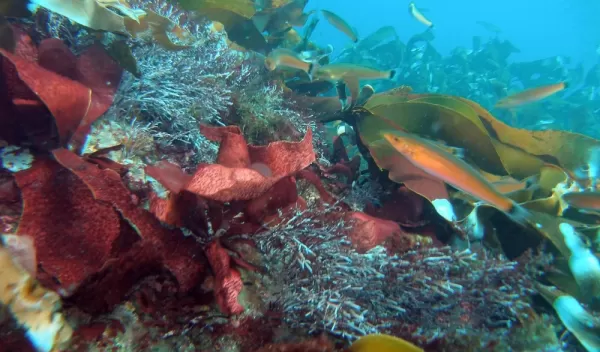
What keeps ocean kelp forest ecosystems stable?
An ecosystem is made up of species, populations, communities, and a network of communities across a region.
A team led by NSF-funded researchers at the University of California-Santa Barbara (UCSB) has published a paper in the journal Ecology showing how these different levels combine to form an ecosystem. The research was conducted in an underwater giant kelp forest off Santa Barbara.
"There's more stability from having more species than from having more patches [locations] where those species live," said UCSB ecologist and paper co-author Bob Miller.
In other words, biodiversity is the key.
"Ecosystems are like Russian dolls," said UCSB marine biologist and co-author Thomas Lamy. "Stability is like the largest one. But inside you can see the influence of individual species, multi-species communities, and meta-communities spanning an entire region."
The scientists were surprised to find synchrony in the health of different kelp forest patches. "Along the California coast, many other seaweed species live beneath giant kelp," said David Garrison, a program director in NSF's Division of Ocean Sciences. "Kelp forests remain relatively stable because of the diversity and growth of these understory species. The understory may be very important for the fish and invertebrates that live in kelp beds."
The research was conducted at NSF's Santa Barbara Coastal LTER site, which focuses on studying the links among kelp forests and other ocean habitats, as well as connections with ecosystems on land. The LTER, or long-term ecological research, site is one in a network of such NSF sites.
"The LTER network is critical to providing long-term data about trends in marine ecosystems and about how biodiversity can affect communities over time," Miller said.
